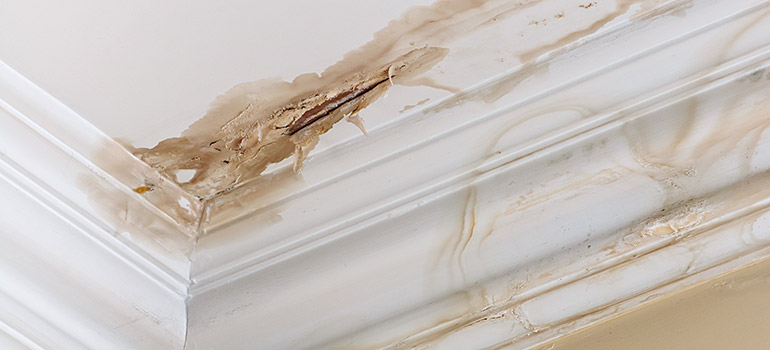6 Water Damage Reconstruction Do's and Don'ts.
6 Water Damage Reconstruction Do's and Don'ts.
Blog Article
Do you find yourself in search of critical info around Preventing Fires and Water Damage In Your Home?

Water provides life, however water invasion on some parts where it's not intended to be can result in damages and also inconvenience. In addition, residences with water damage odor old and mildewy.
Water can come from lots of sources like hurricanes, floods, burst pipelines, leakages, and sewer problems. It's far better to have a working knowledge of safety and security precautions if you have water damage. Here are a few guidelines on exactly how to manage water damages.
Do Prioritize Residence Insurance Protection
Seasonal water damages can originate from floodings, seasonal rainfalls, as well as wind. There is likewise an event of an unexpected flood, whether it came from a damaged pipe that unexpectedly ruptures into your residence. To protect your residence, obtain residence insurance that covers both disasters such as all-natural catastrophes, as well as emergencies like damaged plumbing.
Don't Forget to Switch Off Utilities
When calamity strikes as well as you remain in a flood-prone area, shut off the major electrical circuit. Shutting off the power avoids
When water comes in as water serves as a conductor, electrical shocks. Do not fail to remember to switch off the primary water line valve as a means to stop even more damage.
If the floodwaters are getting high, maintain your furniture secure as they can walk around and also create additional damage.
Do Keep Proactive as well as Heed Weather Alerts
If you live in an area plagued by floodings, remain aggressive as well as ready at all times. Pay attention to the information and also evacuation cautions if you live near a body of water like a creek, lake, or river .
Do Not Neglect the Roof
Your roofer needs to take care of the damaged gutters or any kind of other indications of damage or weakening. An assessment will stop water from flowing down your walls and soaking your ceiling.
Do Take Notice Of Small Leakages
A ruptured pipe does not take place in a vacuum or over night. There are warnings that can draw your interest and also indicate to you some damaged pipelines in your home. Indications of warnings in your pipes include gurgling paint, peeling off wallpaper, water streaks, water spots, or trickling audios behind the walls. There are indications that the pipeline will certainly burst. Do not wait for an acceleration if you see these indications. Repair service as well as examine your plumbing fixed before it causes enormous damage to your residence, finances, and also a personal problem.
Do Not Panic in Case of a Burst Pipeline
Timing is key when it comes to water damage. If a pipeline bursts in your home, quickly shut off your major water valve to reduce off the source and also prevent even more damages. Call a credible water damages remediation professional for support.
Water offers life, but water invasion on some components where it's not expected to be can result in damages and also hassle. In enhancement, homes with water damages scent old and mildewy.
Seasonal water damages can come from floodings, seasonal rains, as well as wind. Indicators of red flags in your pipes include gurgling paint, peeling off wallpaper, water touches, water stains, or leaking audios behind the wall surfaces. If a pipe bursts in your house, quickly shut off your primary water shutoff to reduce off the resource and also avoid more damages.
Some Do's & Don't When Dealing with a Water Damage
DO:
Make sure the water source has been eliminated. Contact a plumber if needed. Turn off circuit breakers supplying electricity to wet areas and unplug any electronics that are on wet carpet or surfaces Remove small furniture items Remove as much excess water as possible by mopping or blotting; Use WHITE towels to blot wet carpeting Wipe water from wooden furniture after removing anything on it Remove and prop up wet upholstery cushions for even drying (check for any bleeding) Pin up curtains or furniture skirts if needed Place aluminum foil, saucers or wood blocks between furniture legs and wet carpet Turn on air conditioning for maximum drying in winter and open windows in the summer Open any drawers and cabinets affected for complete drying but do not force them open Remove any valuable art objects or paintings to a safe, dry place Open any suitcases or luggage that may have been affected to dry, preferably in sunlight Hang any fur or leather goods to dry at room temperature Punch small holes in sagging ceilings to relieve trapped water (don't forget to place pans beneath!); however, if the ceiling is sagging extremely low, stay out of the room and we'll take care of it DO NOT:
Leave wet fabrics in place; dry them as soon as possible Leave books, magazines or any other colored items on wet carpets or floor Use your household vacuum to remove water Use TV's or other electronics/appliances while standing on wet carpets or floors; especially not on wet concrete floors Turn on ceiling fixtures if the ceiling is wet Turn your heat up, unless instructed otherwise

As a fervent person who reads on Fire And Water Damage Prevention, I figured sharing that piece was really useful. Sharing is good. Who knows, you might be helping someone out. Thank you for going through it.
Report this page